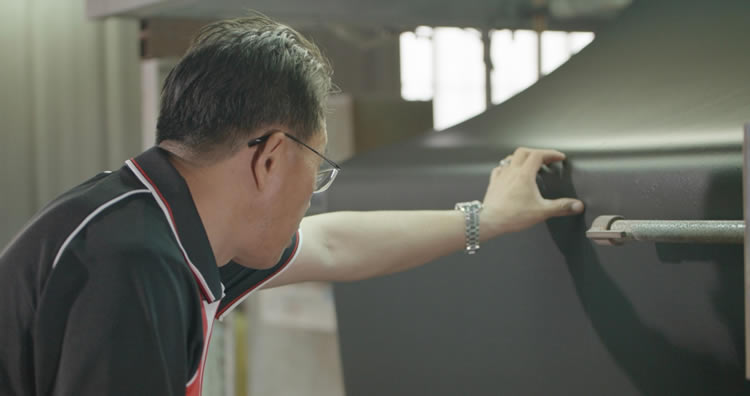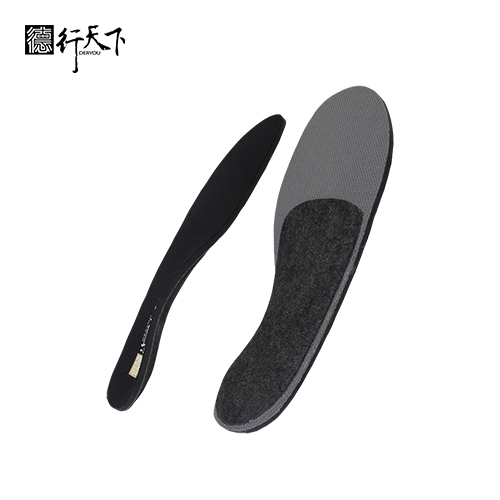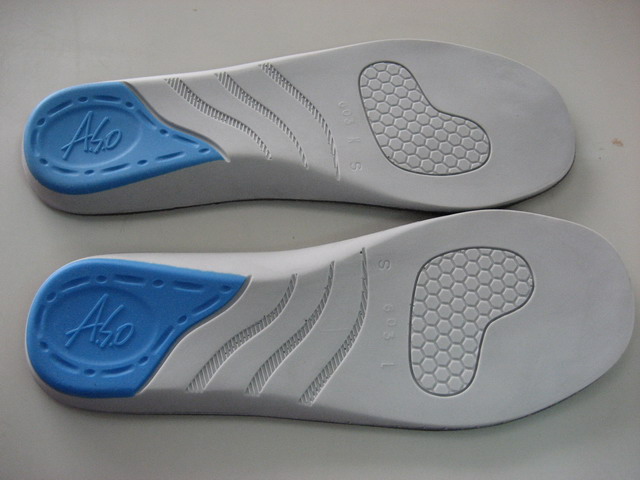Introduction – Company Background
GuangXin Industrial Co., Ltd. is a specialized manufacturer dedicated to the development and production of high-quality insoles.
With a strong foundation in material science and footwear ergonomics, we serve as a trusted partner for global brands seeking reliable insole solutions that combine comfort, functionality, and design.
With years of experience in insole production and OEM/ODM services, GuangXin has successfully supported a wide range of clients across various industries—including sportswear, health & wellness, orthopedic care, and daily footwear.
From initial prototyping to mass production, we provide comprehensive support tailored to each client’s market and application needs.
At GuangXin, we are committed to quality, innovation, and sustainable development. Every insole we produce reflects our dedication to precision craftsmanship, forward-thinking design, and ESG-driven practices.
By integrating eco-friendly materials, clean production processes, and responsible sourcing, we help our partners meet both market demand and environmental goals.


Core Strengths in Insole Manufacturing
At GuangXin Industrial, our core strength lies in our deep expertise and versatility in insole and pillow manufacturing. We specialize in working with a wide range of materials, including PU (polyurethane), natural latex, and advanced graphene composites, to develop insoles and pillows that meet diverse performance, comfort, and health-support needs.
Whether it's cushioning, support, breathability, or antibacterial function, we tailor material selection to the exact requirements of each project-whether for foot wellness or ergonomic sleep products.
We provide end-to-end manufacturing capabilities under one roof—covering every stage from material sourcing and foaming, to precision molding, lamination, cutting, sewing, and strict quality control. This full-process control not only ensures product consistency and durability, but also allows for faster lead times and better customization flexibility.
With our flexible production capacity, we accommodate both small batch custom orders and high-volume mass production with equal efficiency. Whether you're a startup launching your first insole or pillow line, or a global brand scaling up to meet market demand, GuangXin is equipped to deliver reliable OEM/ODM solutions that grow with your business.



Customization & OEM/ODM Flexibility
GuangXin offers exceptional flexibility in customization and OEM/ODM services, empowering our partners to create insole products that truly align with their brand identity and target market. We develop insoles tailored to specific foot shapes, end-user needs, and regional market preferences, ensuring optimal fit and functionality.
Our team supports comprehensive branding solutions, including logo printing, custom packaging, and product integration support for marketing campaigns. Whether you're launching a new product line or upgrading an existing one, we help your vision come to life with attention to detail and consistent brand presentation.
With fast prototyping services and efficient lead times, GuangXin helps reduce your time-to-market and respond quickly to evolving trends or seasonal demands. From concept to final production, we offer agile support that keeps you ahead of the competition.
Quality Assurance & Certifications
Quality is at the heart of everything we do. GuangXin implements a rigorous quality control system at every stage of production—ensuring that each insole meets the highest standards of consistency, comfort, and durability.
We provide a variety of in-house and third-party testing options, including antibacterial performance, odor control, durability testing, and eco-safety verification, to meet the specific needs of our clients and markets.
Our products are fully compliant with international safety and environmental standards, such as REACH, RoHS, and other applicable export regulations. This ensures seamless entry into global markets while supporting your ESG and product safety commitments.
ESG-Oriented Sustainable Production
At GuangXin Industrial, we are committed to integrating ESG (Environmental, Social, and Governance) values into every step of our manufacturing process. We actively pursue eco-conscious practices by utilizing eco-friendly materials and adopting low-carbon production methods to reduce environmental impact.
To support circular economy goals, we offer recycled and upcycled material options, including innovative applications such as recycled glass and repurposed LCD panel glass. These materials are processed using advanced techniques to retain performance while reducing waste—contributing to a more sustainable supply chain.
We also work closely with our partners to support their ESG compliance and sustainability reporting needs, providing documentation, traceability, and material data upon request. Whether you're aiming to meet corporate sustainability targets or align with global green regulations, GuangXin is your trusted manufacturing ally in building a better, greener future.
Let’s Build Your Next Insole Success Together
Looking for a reliable insole manufacturing partner that understands customization, quality, and flexibility? GuangXin Industrial Co., Ltd. specializes in high-performance insole production, offering tailored solutions for brands across the globe. Whether you're launching a new insole collection or expanding your existing product line, we provide OEM/ODM services built around your unique design and performance goals.
From small-batch custom orders to full-scale mass production, our flexible insole manufacturing capabilities adapt to your business needs. With expertise in PU, latex, and graphene insole materials, we turn ideas into functional, comfortable, and market-ready insoles that deliver value.
Contact us today to discuss your next insole project. Let GuangXin help you create custom insoles that stand out, perform better, and reflect your brand’s commitment to comfort, quality, and sustainability.
🔗 Learn more or get in touch:
🌐 Website: https://www.deryou-tw.com/
📧 Email: shela.a9119@msa.hinet.net
📘 Facebook: facebook.com/deryou.tw
📷 Instagram: instagram.com/deryou.tw
China foot care insole ODM expert
Are you looking for a trusted and experienced manufacturing partner that can bring your comfort-focused product ideas to life? GuangXin Industrial Co., Ltd. is your ideal OEM/ODM supplier, specializing in insole production, pillow manufacturing, and advanced graphene product design.
With decades of experience in insole OEM/ODM, we provide full-service manufacturing—from PU and latex to cutting-edge graphene-infused insoles—customized to meet your performance, support, and breathability requirements. Our production process is vertically integrated, covering everything from material sourcing and foaming to molding, cutting, and strict quality control.Indonesia graphene sports insole ODM
Beyond insoles, GuangXin also offers pillow OEM/ODM services with a focus on ergonomic comfort and functional innovation. Whether you need memory foam, latex, or smart material integration for neck and sleep support, we deliver tailor-made solutions that reflect your brand’s values.
We are especially proud to lead the way in ESG-driven insole development. Through the use of recycled materials—such as repurposed LCD glass—and low-carbon production processes, we help our partners meet sustainability goals without compromising product quality. Our ESG insole solutions are designed not only for comfort but also for compliance with global environmental standards.Vietnam insole OEM manufacturer
At GuangXin, we don’t just manufacture products—we create long-term value for your brand. Whether you're developing your first product line or scaling up globally, our flexible production capabilities and collaborative approach will help you go further, faster.China anti-bacterial pillow ODM design
📩 Contact us today to learn how our insole OEM, pillow ODM, and graphene product design services can elevate your product offering—while aligning with the sustainability expectations of modern consumers.Graphene-infused pillow ODM China
The USA-Mexico border wall could restrict the movement of jaguars as they shift between countries to find more hospitable places to live due to climate change. Credit: Stephen Willis/Durham University Walls and fences designed to secure national borders could make it difficult for almost 700 mammal species to adapt to climate change, according to new research. The study led by Durham University, UK, is the first to look at how man-made barriers could restrict the movement of animals as they shift between countries to find more hospitable places to live. The researchers identified 32,000 km (20,000 mi) of borders that are fortified with fences and walls, which have the potential to stop large numbers of animals from moving to more suitable environments. Of these barriers, the USA-Mexico border wall, fences along the border between China and Russia, and fencing being constructed along the India-Myanmar border might be the most ecologically damaging, they said. The USA-Mexico border wall alone could obstruct the movement of 122 mammal species displaced by climate change, the authors have calculated. Border barriers, such as this along the USA-Mexico border, present an obstacle for many species whose ranges are shifting under climate change. Credit: Steve Hillebrand/USFWS Mammals that could be obstructed by man-made borders across the world include leopards, tigers, the critically endangered Saiga antelope, cheetah, and jaguarundi (See Additional Information for more potentially affected species). As well as considering political borders, the researchers also compared the likely impacts of ongoing climate change on species within countries. They found that biodiversity loss is likely to be most severe in countries that are less responsible for the emissions that are driving climate change. The findings are published in the journal Proceedings of the National Academy of Sciences, USA. The researchers say that a third of mammals and birds will need to find suitable habitats in other countries by 2070 due to climate change, with this movement most likely to happen between the Amazon rainforest and tropical Andes, around the Himalayas, and in parts of Central and Eastern Africa. They are calling for more cross-border conservation initiatives and habitat corridors to reduce the problem. They have also urged world leaders to reduce the risk to biodiversity by committing to ambitious reductions in greenhouse gases when they meet at the UN Climate Change Conference in Glasgow this November. Leopards are one of nearly 700 species that may be unable to move into new countries because of border barriers as the climate changes. Credit: Stephen Willis/Durham University Joint-study lead Professor Stephen Willis, in Durham University’s Department of Biosciences, said: “Species all over the planet are on the move as they respond to a changing climate. Our findings show how important it is that species can move across national boundaries through connected habitats in order to cope with this change. “Borders that are fortified with walls and fences pose a serious threat to any species that can’t get across them. “If we’re serious about protecting nature, expanding transboundary conservation initiatives and reducing the impacts of border barriers on species will be really important – although there’s no substitute for tackling the greenhouse gas emissions at the root of the issue.” In total the researchers looked at the effect of climate change on the movement of 12,700 mammal and bird species whose habitats could be affected by rising global temperatures, forcing them to find new homes. They found that the loss of bird and mammal species was projected to be greater in poorer countries with lower CO2 emissions which would be impacted more significantly by global climate change. Joint-study lead Mark Titley, a PhD researcher in Durham University’s Department of Biosciences, said: “The stark inequities between those who contributed most to climate change and those who will be most impacted raise really important questions of international justice. “Fortunately, our models also show how strong and urgent emissions reductions, in line with the Paris Agreement, could greatly reduce the impacts on biodiversity and relieve the burden of such losses on less wealthy nations. “World leaders must seize the opportunity at November’s COP 26 climate conference in Glasgow to ramp up ambitious pledges to cut emissions, or risk enormous harm to the natural world and our societies that depend on it.” Reference: “Global inequities and political borders challenge nature conservation under climate change” by Mark A. Titley, Stuart H. M. Butchart, Victoria R. Jones, Mark J. Whittingham and Stephen G. Willis, 8 February 2021, Proceedings of the National Academy of Sciences. DOI: 10.1073/pnas.2011204118 The research was funded by the Natural Environment Research Council, part of UK Research and Innovation, and carried out in collaboration with BirdLife International. Additional information Species that could be affected by the USA-Mexico border wall: Mexican wolf Jaguar Jaguarundi White-lipped peccary Margay Common opossum Greater grison Southern spotted skunk Species that could be affected by the India-Myanmar border: Sloth bear Indian pangolin Banteng Large spotted civet Himalayan goral Gongshan muntjac Indian grey mongoose Burmese hare Species that could be affected by the China-Russia border: Tibetan antelope Chinese goral Goa Goitered gazelle Tibetan fox Desert hare Korean hare Hog badger
How many X chromosomes you have can affect your health. Sex chromosomes, particularly genes that escape X-inactivation in XX individuals, play a key role in heart disease. Research suggests that personalized treatments targeting these genes could lead to better outcomes in conditions like aortic valve stenosis. Most mammals, including humans, have two sex chromosomes, X and Y. One sex chromosome is usually inherited from each parent, and they pair up as either XX or XY in every cell of the body. People with XX chromosomes typically identify as female, and people with XY chromosomes typically identify as male. The genes on these chromosomes play a key role in development and function – including how heart disease develops. Before I became a biomedical engineer studying how sex chromosomes affect the heart, I learned about one curious function of X chromosomes in my high school science class, with the calico cat example. Female calico cats almost always have orange and black splotches of fur, because the gene that defines coat color is found on the X chromosome. When an orange cat mates with a black cat, female offspring, which typically inherit one X chromosome from each parent, will have a mixture of orange and black fur – one X chromosome encodes for orange fur while the other encodes for black fur. For this reason, male cats, which typically have one X and one Y chromosome, have solid orange or black coats. Calico and tortoiseshell cats have multicolored patches of fur because only one of their two X chromosomes is activated in each cell. How does this sex difference in fur color happen biologically? As it turns out, cells with XX chromosomes experience X-inactivation: The X chromosome from one parent is turned off in some cells, while the X chromosome inherited from the other parent is turned off in others. In the cells of female calico cats, X-inactivation can lead to splotches of orange and black fur if one X chromosome comes from a parent with orange fur and the other X chromosome comes from a parent with black fur. X-inactivation happens because organisms like cats and people need only one X chromosome to function properly. To ensure the correct “dosage,” one of the X chromosomes is turned off in every cell. But some of the genes on the inactivated X chromosome escape inactivation and stay turned on. In fact, up to one-third of the genes on the X chromosome in people can escape inactivation, and they are thought to play a role in regulating health and disease. Because X-inactivation happens only in those people with more than one X chromosome, researchers like me have been looking at how the genes that escape inactivation on the second X affect the health of people with XX chromosomes. We’ve found that for certain conditions, cell sex may be at the heart of the matter. A Change of Heart One disease that X chromosome escape genes partially regulate is aortic valve stenosis, a condition in which the part of the heart that controls blood flow to the rest of the body stiffens and narrows. This makes the heart work harder to pump blood and can ultimately lead to heart failure. Much like a person trying to push open a door with rusty hinges, the heart gets tired. There are currently no effective drugs available to slow or halt AVS disease symptoms. Hearts with aortic valve stenosis must pump harder to push blood through a narrowed aortic valve to the rest of the body. Credit: SuneErichsen/Wikimedia Commons, CC BY-SA My lab studies how sex chromosomes can affect cardiovascular conditions like AVS. Previous studies have shown that the valves of people with XX versus XY chromosomes can stiffen in different ways. Generally, people with XX chromosomes have increased scarring, called fibrosis, whereas people with XY chromosomes have increased calcium deposits. Given these differences, I suspected that giving the same drug to everyone might not be the best way to treat AVS. But what could be causing these differences? By and large, researchers think sex hormones drive sex differences in valve tissue stiffening. Indeed, decreasing estrogen levels during menopause can exacerbate heart fibrosis. However, studies on cardiovascular disease in XX and XY mice have found that sex differences still persist even after surgically excising the reproductive organs that produce sex hormones. My team and I hypothesized that the genes that escape X-inactivation, being unique to people with XX chromosomes, may be driving these differences in valve stiffening. To test this idea, we developed bioengineered models of valve tissue using hydrogels. Hydrogels mimic the stiffness of valve tissue better than the traditional petri dish medium, allowing us to study heart cells in an environment that more closely resembles the body. Heart tissue with XX chromosomes has a higher concentration of cells (colored green, with blue nuclei) that promote scarring than do cells with XY chromosomes. Credit: Brian Aguado, CC BY-NC-ND We found that the cells we grew on our hydrogel models were able to replicate the sex differences seen in valve tissue – namely, valve cells with XX chromosomes had more scarring than cells with XY chromosomes. Moreover, when we decreased the activity of genes that escaped X-inactivation, we were able to decrease scarring in XX chromosome cells. Our next step was to use our models to determine which treatments work best for AVS based on cell sex. We found that XX valve cells were less sensitive than XY cells to these drugs that targeted genes that promote scarring. Drugs that specifically target genes that escape X-inactivation, however, have a stronger effect on XX cells. Equitable Care for All Sex and gender disparities in cardiovascular disease are rampant. For example, women are less likely than men to be prescribed cardiovascular medications despite guideline recommendations, and transgender individuals have higher rates of heart attacks than do cisgender folks. Our work takes one more step toward achieving equity in developing medical therapeutics for cardiovascular disease. By taking sex chromosomes into consideration, my team and I believe that treatment strategies can be optimized for everyone, irrespective of cell “seXX.” Written by Brian Aguado, Assistant Professor, University of California San Diego. This article was first published in The Conversation.
Research indicates that early social interactions, characterized by engaging in “parentese,” positively affect infant language development by enhancing brain activity in areas associated with attention. This foundational study underscores the crucial role of adult-baby interactions in fostering early language skills. The sight of a parent engaging with their baby is universally touching. Speaking in a melodious, high-pitched tone—often called “parentese”—the parent reacts warmly to the baby’s coos and movements, frequently sharing smiles and making eye contact. These connections don’t just make for a touching sight. New research from the University of Washington’s Institute for Learning & Brain Sciences (I-LABS) shows they’re important for infant language growth, too. In a study published April 8 in Current Biology, researchers used a safe and noninvasive brain-imaging technique called magnetoencephalography, or MEG, to monitor infant brain activity during social and nonsocial interactions with the same adult. They found that when the adult talked and played socially with a 5-month-old baby, the baby’s brain activity particularly increased in regions responsible for attention — and the level of this type of activity predicted enhanced language development at later ages. This ‘social’ scenario was compared with a ‘nonsocial’ scenario in which the adult turned away from the baby to talk to another person. This interaction showed lower activity levels in the same brain areas. Groundbreaking Study Findings “This is the first study to directly compare infant brain responses to adult-infant social interaction versus nonsocial interaction, and then follow up with the children until they reached the age of 2.5 to see how the early brain activation relates to the child’s future language abilities,” said lead author Alexis Bosseler, research scientist at I-LABS. The MEG brain-imaging technology allowed the baby to move and interact naturally with the adult, which enabled researchers to track the firing of neurons from multiple areas in the baby’s brain as the adult talked to, played with, and smiled at the baby. They then monitored the infant’s brain activity a second time as the adult turned away and paid attention to someone else. These actions naturally occur every day between adults and babies, and the study showed they have different measurable effects on a baby’s brain. Researchers found that increased neural activity in response to the social interaction at 5 months predicted enhanced language development at five later ages: 18, 21, 24, 27, and 30 months. The researchers tracked infants’ language development using a well-documented and validated survey that asks parents about words and sentences their infants say at home. Significance of Early Interaction and Future Research “The connection between early brain reactions and later language is consistent with scientists’ fascination with the early age period and opens up many new questions that we, and others, will be exploring,” said co-author Andrew Meltzoff, I-LABS co-director and a UW professor of psychology. Researchers chose 5-month-old babies for the study because that age is just before the “sensitive period” for speech-language learning, which begins at about 6 months. Once this period begins, it’s especially important for infants to observe adults because attention enhances learning. Using parentese with infants represents an intuitive desire to connect, said Patricia Kuhl, senior author and co-director of I-LABS. “There’s an implicit understanding that language is about connection,” Kuhl said. “It’s about a communicative pathway between you and the other. This starts in infancy with the desire to make that communicative connection.” The study’s results are particularly important for parents and early educators to understand, Kuhl said. “We knew from previous work that social interaction is essential at 9 months of age for foreign-language learning, but the current study shows that social interaction plays a role much earlier,” Kuhl said. “The study shows that parents’ natural use of parentese, coupled with smiles, touch, and their warm back-and-forth responses to the baby’s actions, have a real-world, measurable impact on the baby’s brain. We theorize that this parenting behavior, which we call ‘the social ensemble,’ captures and holds infants’ attention and motivates them to learn at a critical time in development.” Reference: “Infants’ brain responses to social interaction predict future language growth” by Alexis N. Bosseler, Andrew N. Meltzoff, Steven Bierer, Elizabeth Huber, Julia C. Mizrahi, Eric Larson, Yaara Endevelt-Shapira, Samu Taulu and Patricia K. Kuhl, 8 April 2024, Current Biology. DOI: 10.1016/j.cub.2024.03.020 The study was funded by the Bezos Family Foundation, the Overdeck Family Foundation, and the National Institutes of Health.
DVDV1551RTWW78V
High-performance graphene insole OEM China 》trusted by clients across wellness, footwear, and bedding industriesIndonesia sustainable material ODM solutions 》where innovation meets ergonomic comfort and market demandPillow OEM for wellness brands Indonesia 》helping your business stand out with material and functional innovation
下一則: 新北團體鞋定製生產線 》德侑實業:專業打造客製化團體鞋,團隊風格升級
限會員,要發表迴響,請先登入


